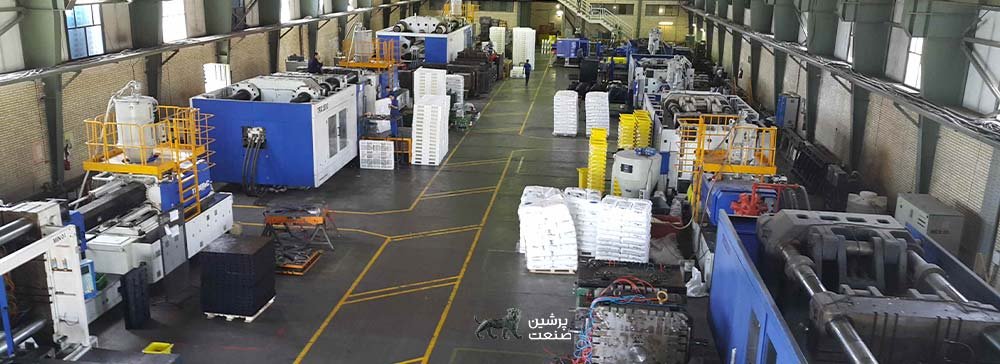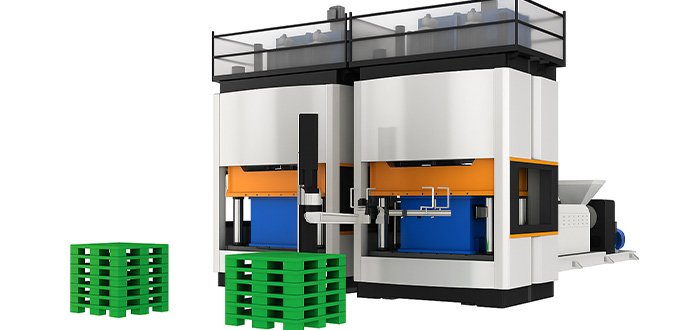If we were to answer the question, “Where is the plastic pallet market heading?”, we would have to say that the plastic pallet market is highly diverse and developing rapidly, with sectors exhibiting different levels of maturity and growth potential. As one of the key tools in transportation and warehousing, these pallets have gained an important position in the global market in recent years. It has been a long time since more mature sectors, such as automotive and beverage industries, have recognized the advantages of plastic pallets in terms of features such as durability and longevity, light weight, hygiene and safety, and have largely replaced plastic pallets with their traditional counterparts.

On the other hand, the food and pharmaceutical sectors offer significant opportunities for growth in this area. These industries have increasingly moved towards using hygienic plastic pallets in recent years, instead of their wooden and metal counterparts due to regulatory and health requirements.
The affordability and ease of transportation of lightweight plastic pallets, such as Persian Sanat’s Nest Pallets (NP), make them attractive to companies looking to reduce costs and achieve environmental goals.
In this article, we intend to examine the outlook for the plastic pallet market in different regions of the world, including Asia, Europe, America, and especially Iran.
Global markets of plastic pallet
According to the latest data and final report from Grand View Research, the global market of plastic pallet is estimated to be worth $7.3 billion in 2022 and is expected to expand at a compound annual growth rate of 5.6% from 2022 to 2030.
Hygienic and durable pallets are used in the food and beverage, pharmaceutical and chemical industries. The increasing focus on finding new ways to transport goods and products based on sustainable development will increase the demand for reusable packaging, which in turn will enhance the demand for plastic pallets made from recycled plastic. The United States is a key country in the North American plastic pallet market in 2022 due to its high commercial value of pallet production. The country’s trade value reached $3.7 trillion in 2020, with $1.4 trillion coming from exports and $2.3 trillion from imports. The United States is recognized as one of the top importing countries, along with other key producing and importing countries including China, Germany, Japan, Canada, and Mexico.

According to statistics, in last years, nested pallets have dominated the market and accounted for the largest revenue share with 43.7% in 2022. Nestable pallets can be placed inside each other, so they take up less space during the transportation process and are more cost-effective compared to other types of pallets. In addition, nestable pallets are less expensive than industrial and sanitary pallets, which makes them a more suitable option for supply chains transporting and storing goods and products.
Research also indicates that food and beverages, among various industries, are the top buyers of plastic pallets and accounted for the largest revenue share with 23.4% in 2022. In the food and beverage industry, plastic pallets are used by agricultural companies and farmers to produce fresh, bakery, dairy products, beverages, meat, etc. Other food processing companies also make use of these pallets to store and transport raw and processed finished products. Plastic pallets are increasingly preferred over wooden pallets in food industry for the reason that they do not have nails or chips in their structure, otherwise they could damage food products.
Based on the points and statistics mentioned above, we will examine the different dimensions of global markets in different parts of the world.

Asia: Developing market with high demand
In addition to America, Asian countries play a key role in the growth of this global market as one of the largest consumers and producers of plastic pallets. Leading countries such as China, India, and Japan have a huge demand for plastic pallets due to the rapid growth of the logistics and e-commerce industry.
- China: Due to its large manufacturing industries, China has urgent need for efficient warehousing tools. Increased exports and improved logistics infrastructure have led the plastic pallets to quickly gain a special place in this country.
- India: The growth of e-commerce and the emergence of large logistics companies such as Flipkart and Amazon have increased the need for modern and efficient warehousing in this country. Considering its climate conditions, plastic pallets with high resistance to moisture and weather conditions are an ideal choice for this market.
- Japan: Japan’s automotive and electronics industries need modern transportation tools. The country’s high-quality standards have led to an increased demand for plastic pallets with advanced design.
- Middle East and Iran: Given the growth of the oil and gas, petrochemical, and food industries in this region, the increasing demand for modern warehousing and transportation tools is paving the way for the development of this field. Moreover, with the rapid growth of logistics infrastructure and increasing export volumes, these countries have turned to using plastic pallets. The durability and resistance of these pallets in high temperature is also one of the main factors in their use in this region.

Europe: Focus on recyclable, environmentally-friendly products and sustainable development
European countries are leading the use of plastic pallets due to their emphasis on environmental protection and sustainable development. European companies are looking to replace wooden pallets with recycled plastic ones to reduce their carbon trace.
The good news is that all pallets and pallet boxes produced by Persian Sanat can be manufactured with recycled materials. This commitment to using recycled materials helps companies achieve their sustainability goals while reducing their environmental trace.
Among European countries, Germany and France have created a large market for plastic pallets due to their advanced logistics infrastructure and strict environmental laws. Germany is particularly leading in the production of recyclable and lightweight plastic pallets. With the growth of e-commerce and the need to ship goods quickly, plastic pallets are being used as an effective and sustainable solution in warehouses and distribution centers in the UK too.
One of the most significant key developments in Europe in the field of production and consumption of plastic pallets is the use of new technologies such as RFID in these pallets to track goods and improve supply chain management. This approach not only increases productivity but also reduces operating costs.

Based on the points raised, the plastic pallet market has many opportunities for growth and maturity in different regions of the world. While Asia and the US have focused on innovation and productivity, Europe has taken a sustainable and environmentally-friendly approach. Despite the challenges, The Middle East and Iran also have great potential to develop this industry. It can be said that as the transportation and warehousing industry continues to evolve, plastic pallets will play an unparalleled role in increasing efficiency and reducing costs.



